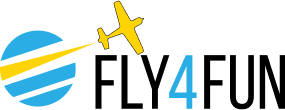Embark on the Adventure of Sport Pilot Flight Training!
Prepare for Takeoff: Requirements and Training Process
To obtain a Sport Pilot license, there is a minimum of 20 hours of flight time required. This includes 15 hours of dual instruction with an instructor and 5 hours of solo flying. Don't be surprised if you exceed these minimums; it's quite common! Prior to taking a practical test, commonly known as a "checkride," there are several requirements to fulfill.
Written Test: You may take the written test at any time during the training process. To prepare, we recommend taking a ground school course. There are several computer-based courses available, such as those offered by Sport Aviation Center, Gleim, Sporty’s, and King Schools. Completing a ground school course will require an endorsement from the school or an instructor before you take the written test. Once ready, you'll register and take the test at a certified testing center. Remember, it is not required to take the written test before flight training or solo flying; you can complete it at any time in the process. However, it must be done before your checkride. The written test remains valid for two years, and if you don't pass a checkride within that period, you'll need to retake the written test.
Flight Instruction: The flight training portion is where the real fun begins! During this phase, you'll cover various flight maneuvers, takeoffs and landings, slow flight, stalls, emergency procedures, cross-country navigation, and more. We will also provide thorough instruction on preflight inspection of the aircraft, maintenance requirements, and procedures. The cross-country navigation component will require both dual and solo cross-country flights with stops at two other airports, covering a total distance of 25 miles. Finally, a couple of hours of test preparation will be conducted before your checkride.
Checkride: To complete your Sport Pilot license, you'll need to schedule a practical test, commonly known as a checkride, with a designated pilot examiner (DPE). The DPE will typically charge a fee ranging from $500 to $900. At Fly4Fun, we work with DPEs who can conduct your checkride.
The Privileges and Beyond: Life as a Sport Pilot
Once you have your Sport Pilot license, certain requirements must be met to continue flying. To take passengers, you must have completed at least 3 takeoffs and landings in the previous 90 days. Additionally, every two years, you'll need to undergo a flight review with an instructor to ensure your skills are sharp. Your Sport Pilot's license is valid for the rest of your life unless it is revoked or surrendered. Even if you take a break from flying for many years, you can return, complete a flight review, and be legally ready to fly again!
Cost and Flexibility: Making it Accessible
The current cost for flight training in our Aeroprakt includes $135 per hour for aircraft rental and $75 per hour for the instructor, resulting in a total of $210 per hour. Your total cost will vary depending on your individual progress and the time you can devote toward earning your Sport Pilot license. It's essential to keep in mind that if you decide to pursue a private or more advanced flying license in the future, all your sport training time with us will count toward earning those certificates as well!
Light Sport Aircraft: Versatility and Freedom
The Sport Pilot rule not only introduced a new type of pilot's license, but also created a new classification of aircraft known as Light Sport aircraft. These aircraft are designed with versatility and freedom in mind. A Light Sport aircraft can have one or two seats, weigh up to 1320 lbs gross weight, and have a maximum full power level speed (Vh speed) of 138 mph or less. They come in various forms, including fixed-wing, weight shift, powered parachute, or gyrocopter. At Fly4Fun, we specialize in providing flight instruction for fixed-wing Light Sport airplanes, utilizing our state-of-the-art Aeroprakt A32 Vixxen aircraft.
The Journey of the Sport Pilot's License: A Game-Changer in Aviation
The Sport Pilot rule, implemented in 2004, revolutionized the aviation world by introducing an entirely new pilot's license. Before the Sport Pilot rule, aspiring pilots had to pursue either a Private Pilot's license or a Recreational Pilot's license to fly aircraft (excluding part 103 ultralight vehicles). However, the Recreational license had similar requirements to a Private license, but with significant limitations, making it less appealing to many. Moreover, all pilots were required to hold at least a third-class flight medical, adding to the regulatory burden.
With the advent of the Sport Pilot rule, obtaining a Sport Pilot license became a streamlined process. Unlike a Private Pilot's license that requires a minimum of 40 hours of training, a Sport Pilot license can be completed with a minimum of 20 hours (although exceeding the minimum is common). The reduced training hours are attributed to the specific privileges and limitations of a Sport Pilot. While a Sport Pilot is restricted to daytime VFR (visual flight rules) and must adhere to stricter weather minimums, this also eliminates the need for night training and instrument training requirements.
Privileges of a Sport Pilot: Freedom to Explore
The privileges of a Sport Pilot are remarkably wide and enable flying clear across the country if you wish. A Sport Pilot can fly a Light Sport Aircraft in daylight VFR conditions with a minimum visibility of 3 miles. This allows Sport Pilots to venture to numerous destinations and explore the skies much like a Private Pilot. Certain logbook endorsements may be required for specific privileges, but the freedom and joy of flying as a Sport Pilot are unparalleled.
Say YES to the adventure and let your dreams take flight as a Sport Pilot, where the possibilities are endless!
